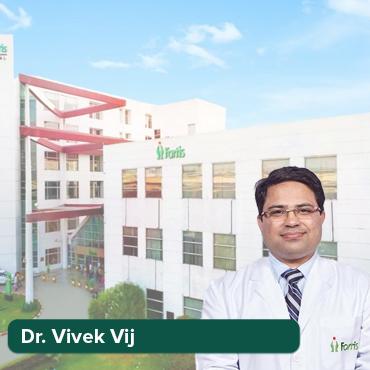
Dos and Don’ts During Recovery from Joint Replacement
01 Aug, 2025
 Healthtrip
Healthtrip- < li>Preparing Your Home Environment for Post-Surgery Recovery
- Effective Pain Management Strategies: Dos and Don'ts
- The Crucial Role of Physical Therapy: Maximizing Your Recovery
- Nutrition and Joint Replacement Recovery: Fueling Your Body Right
- Avoiding Common Complications: What to Watch Out For
- Returning to Activities and Travel: Guidelines and Precautions
- Choosing the Right Hospital for Joint Replacement and Recovery
- Conclusion: A Successful Journey to Joint Health
Do's After Joint Replacement
Following your joint replacement surgery, embracing certain habits and practices can dramatically enhance your recovery process. First and foremost, diligently adhere to your doctor's instructions. This includes taking prescribed medications as directed, attending all scheduled follow-up appointments, and following specific guidelines for wound care. Regular physical therapy is also vital. These sessions, whether at facilities like Fortis Hospital, Noida or even closer to home, are designed to restore strength, flexibility, and range of motion in your new joint. Don't underestimate the power of gentle exercise; even short walks can improve circulation and prevent stiffness. Furthermore, prioritize a healthy diet rich in protein, vitamins, and minerals to support tissue repair and boost your immune system. Finally, create a safe environment at home by removing tripping hazards and using assistive devices like walkers or grab bars to prevent falls. Remember, patience is key. Recovery takes time, so celebrate small victories and stay focused on your long-term goals.
Transform Your Beauty, Boost Your Confidence
Find the right cosmetic procedure for your needs.

We specialize in a wide range of cosmetic procedures

Don'ts After Joint Replacement
While focusing on what you should do is important, knowing what to avoid after joint replacement surgery is equally crucial for a smooth recovery. Avoid high-impact activities and strenuous exercises like running or heavy lifting, as these can put excessive stress on your new joint and hinder healing. Also, refrain from crossing your legs or bending at the waist excessively, especially in the initial weeks after surgery, as these movements can dislocate the joint. Smoking and excessive alcohol consumption should be strictly avoided, as they can impair bone healing and increase the risk of complications. Furthermore, be cautious about prolonged sitting or standing without taking breaks to stretch and move around. Ignoring pain signals is a big no-no; if you experience persistent or worsening pain, consult your doctor or physical therapist promptly. Finally, ditch the idea of rushing back to your pre-surgery lifestyle too soon. Embrace a gradual and mindful approach to ensure your body has ample time to adapt and heal, perhaps even exploring options like post-operative care at Vejthani Hospital, known for its excellent rehabilitation services, to further aid your recovery and safely return to your favorite activities.
Managing Pain After Joint Replacement
Pain management is an integral part of your recovery journey after joint replacement surgery. Open communication with your healthcare team is essential to effectively address post-operative pain. Follow your doctor's instructions regarding pain medication, taking them as prescribed and reporting any side effects. Explore non-pharmacological approaches like ice packs, elevation, and gentle stretching to alleviate discomfort. Creating a comfortable and relaxing environment can also help manage pain; consider using relaxation techniques such as deep breathing or meditation. Physical therapy plays a crucial role in pain management by improving joint mobility and reducing stiffness. Ensure you have a clear understanding of when and how to take pain medication, and don't hesitate to reach out to your healthcare provider at places like NMC Specialty Hospital, Al Nahda, Dubai if your pain is not adequately controlled. Remember, effectively managing pain not only enhances your comfort but also promotes faster healing and improved overall well-being.
Diet and Nutrition During Recovery
The food that you consume becomes more important during the recovery process after joint replacement surgery. Prioritize a balanced diet rich in protein, vitamins, and minerals to support tissue repair and bone healing. Protein is essential for muscle recovery and wound closure, so incorporate sources like lean meats, poultry, fish, beans, and tofu into your meals. Calcium and vitamin D are crucial for bone health, so consume dairy products, leafy greens, and fortified foods. Fruits and vegetables provide essential vitamins and antioxidants to boost your immune system and reduce inflammation. Stay well-hydrated by drinking plenty of water throughout the day, as dehydration can hinder the healing process. Limit your intake of processed foods, sugary drinks, and excessive caffeine, as these can interfere with nutrient absorption and delay recovery. Consulting a registered dietitian can provide personalized dietary recommendations tailored to your specific needs. Consider exploring options for dietary support from facilities like Yanhee International Hospital, which often integrate nutritional counseling into their post-operative care programs, optimizing your recovery from the inside out.
Physical Therapy and Exercise
Physical therapy and exercise are the cornerstones of a successful recovery after joint replacement surgery. A structured physical therapy program, tailored to your individual needs, will help restore strength, flexibility, and range of motion in your new joint. Your physical therapist will guide you through a series of exercises designed to improve muscle strength, reduce stiffness, and enhance balance. Adhering to your physical therapy schedule and performing exercises as instructed is crucial for achieving optimal outcomes. Start slowly and gradually increase the intensity and duration of your exercises as tolerated. Communicate openly with your physical therapist about any pain or discomfort you experience, as they can adjust your program accordingly. Incorporate low-impact activities like walking, swimming, or cycling into your routine to promote cardiovascular health and overall well-being. Regular exercise not only accelerates your recovery, but also helps maintain joint health and prevent future complications. Remember to find a qualified physical therapist and a program that aligns with your goals, perhaps through recommendations from hospitals like Quironsalud Hospital Murcia, ensuring you receive the best possible guidance and support throughout your recovery journey.
Preparing Your Home Environment for Post-Surgery Recovery
Undergoing joint replacement surgery is a significant step towards regaining your mobility and improving your quality of life. However, the journey to full recovery extends beyond the operating room. A crucial aspect of ensuring a successful recovery is preparing your home environment before your surgery. Think of it as setting the stage for your comeback – making sure everything is in place to support your healing process and prevent any unnecessary setbacks. This isn't just about tidying up; it's about strategically modifying your living space to minimize risks and maximize comfort during those initial weeks after surgery when mobility might be limited. Consider this your pre-op nesting phase, focused on creating a haven that caters specifically to your recovery needs. From rearranging furniture to installing helpful aids, every small adjustment can make a big difference in your overall experience. Healthtrip understands that preparing for surgery can be overwhelming, and we’re here to guide you through every step, ensuring you have the resources and support you need for a smooth transition back home. For instance, exploring options at hospitals like Fortis Shalimar Bagh or Max Healthcare Saket can provide insights into post-operative care and home preparation tips; remember to always confirm the availability of such services directly with the hospital.
Most popular procedures in India
Total Hip Replacemen
Upto 80% off
90% Rated
Satisfactory
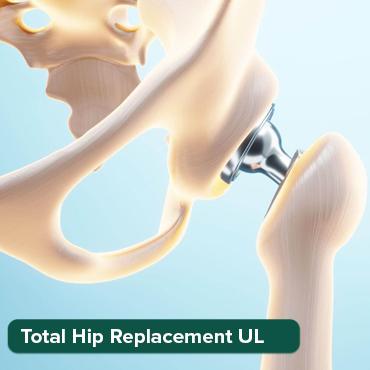
Total Hip Replacemen
Upto 80% off
90% Rated
Satisfactory
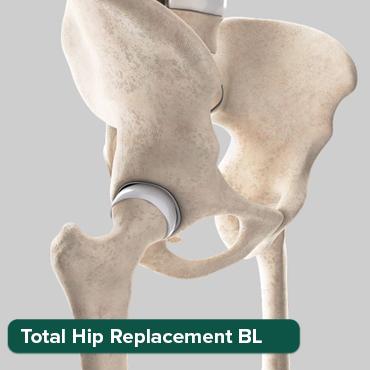
Total Hip Replacemen
Upto 80% off
90% Rated
Satisfactory
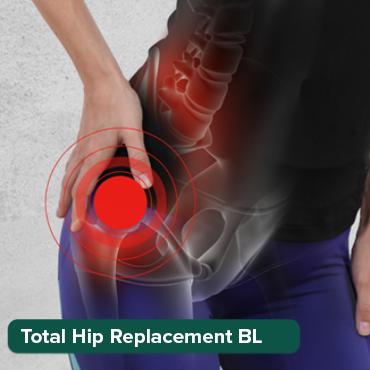
ASD Closure
Upto 80% off
90% Rated
Satisfactory

Liver Transplant Sur
Upto 80% off
90% Rated
Satisfactory
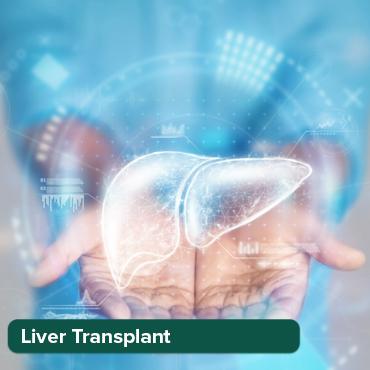
Decluttering and Rearranging Furniture
Imagine navigating your home with crutches or a walker. Suddenly, that cozy rug in the hallway becomes a potential tripping hazard, and the coffee table transforms into an obstacle course. Before your surgery, take a proactive approach to eliminate these risks. Start by decluttering your living spaces, removing any unnecessary items that might obstruct your path. Consider rearranging furniture to create wider walkways, allowing you to move around freely and safely. Secure loose electrical cords and tuck them away to prevent tripping. Move frequently used items to easily accessible locations, minimizing the need to reach, bend, or stretch. This might involve relocating your favorite book to a lower shelf, setting up a temporary workstation on a higher table, or moving commonly used kitchen appliances to the countertop. The goal is to create a clear and navigable environment that promotes independence and reduces the risk of falls. Remember, your home should be a source of comfort and support, not a potential hazard zone. Healthtrip can assist you in finding resources and support networks to help with these modifications, perhaps even connecting you with professionals who can provide tailored home safety assessments. You might even want to inquire with hospitals like Vejthani Hospital or Bangkok Hospital about their pre-operative preparation programs, ensuring you're fully equipped for a successful recovery.
Essential Home Modifications and Assistive Devices
Beyond decluttering and rearranging, consider implementing specific home modifications and acquiring assistive devices to further enhance your safety and comfort. Install grab bars in the bathroom, particularly near the toilet and in the shower, to provide added stability and support. Raise the toilet seat height with an elevated toilet seat to reduce strain on your hips and knees. Use a shower chair or bench to minimize the risk of falls while showering. If you have stairs in your home, consider installing a temporary stairlift or arrange to stay on the main floor during your initial recovery period. A long-handled shoehorn, a dressing stick, and a reacher can be invaluable tools for maintaining independence while minimizing bending and reaching. These assistive devices can significantly reduce the strain on your joints and make everyday tasks easier and safer. Healthtrip can connect you with suppliers of these essential aids and offer guidance on selecting the right products for your specific needs. Furthermore, hospitals such as Saudi German Hospital Cairo and NMC Specialty Hospital, Al Nahda, Dubai may offer occupational therapy consultations to assess your home environment and recommend appropriate modifications, ensuring you have a personalized plan for a safe and comfortable recovery. By strategically modifying your home, you're not just preparing a space; you're investing in your well-being and empowering yourself for a successful recovery journey.
Effective Pain Management Strategies: Dos and Don'ts
Pain management is a cornerstone of a successful recovery after joint replacement surgery. It’s not just about masking the discomfort; it's about actively controlling pain to facilitate healing, improve mobility, and enhance your overall well-being. Effective pain management allows you to participate more fully in physical therapy, get adequate rest, and regain your independence sooner. However, navigating the world of pain relief can be tricky, with various options available and potential pitfalls to avoid. Understanding the "dos" and "don'ts" of pain management is crucial for maximizing its benefits and minimizing potential side effects. This isn't about toughing it out; it's about being smart and proactive in managing your pain, working closely with your healthcare team to find the most effective strategies for your individual needs. Healthtrip recognizes that pain management is a deeply personal experience, and we’re committed to providing you with the information and resources you need to make informed decisions and achieve optimal pain control. As you consider your options, explore leading hospitals like Mount Elizabeth Hospital and Singapore General Hospital which often provide comprehensive pain management programs that you might find beneficial; be sure to confirm directly with the hospital.
Prescription Pain Medications: Usage and Precautions
Prescription pain medications, particularly opioids, are often prescribed in the immediate aftermath of joint replacement surgery to manage acute pain. While these medications can be effective in providing relief, it's crucial to use them responsibly and with caution. Always follow your doctor's instructions carefully, paying close attention to the prescribed dosage and frequency. Avoid taking more medication than prescribed, even if you feel like your pain isn't adequately controlled. Taking too much medication can lead to serious side effects, including respiratory depression and overdose. Be aware of the potential side effects of opioid medications, such as constipation, nausea, drowsiness, and dizziness. Talk to your doctor about strategies to manage these side effects, such as taking stool softeners or anti-nausea medications. Avoid driving or operating heavy machinery while taking opioid medications, as they can impair your cognitive function and reaction time. It’s also crucial to understand the addictive potential of opioids and to work closely with your doctor to gradually taper off your medication as your pain subsides. Never share your prescription pain medications with others, as this is illegal and can be dangerous. Healthtrip emphasizes the importance of responsible medication use and encourages you to discuss any concerns or questions you have with your healthcare provider. Hospitals like LIV Hospital, Istanbul and Hisar Intercontinental Hospital often have pain management specialists who can provide expert guidance on medication management and alternative pain relief strategies.
Non-Pharmacological Pain Relief Methods
While prescription pain medications can play a vital role in managing post-operative pain, it's equally important to explore non-pharmacological pain relief methods. These methods can complement medication and help you reduce your reliance on them over time. Ice therapy is a simple yet effective way to reduce pain and inflammation. Apply ice packs to the surgical site for 15-20 minutes at a time, several times a day. Heat therapy can also provide relief by relaxing muscles and improving blood flow. Use warm compresses or take warm showers or baths. Gentle exercises, as prescribed by your physical therapist, can help improve circulation, reduce stiffness, and alleviate pain. Relaxation techniques, such as deep breathing, meditation, and progressive muscle relaxation, can help reduce stress and tension, which can exacerbate pain. Distraction techniques, such as listening to music, reading, or watching movies, can help take your mind off the pain. Consider acupuncture or massage therapy as complementary therapies to help manage pain. Healthtrip encourages you to explore a variety of non-pharmacological pain relief methods to find what works best for you. Talk to your doctor or physical therapist about incorporating these methods into your pain management plan. Hospitals such as Jiménez Díaz Foundation University Hospital and Quironsalud Hospital Murcia often offer comprehensive pain management services that include a range of non-pharmacological therapies, ensuring you have access to a holistic approach to pain relief. Remember, managing pain effectively is a marathon, not a sprint, and a multi-faceted approach is often the most successful.
The Crucial Role of Physical Therapy: Maximizing Your Recovery
Physical therapy is arguably the most crucial element in your journey to recovery following joint replacement surgery. It's not just about regaining movement; it's about rebuilding strength, restoring function, and learning how to protect your new joint for the long term. Think of physical therapy as your personalized roadmap to independence, guiding you through a series of exercises and interventions designed to help you achieve your specific recovery goals. Without consistent and dedicated participation in physical therapy, you risk limiting your range of motion, developing scar tissue, and potentially hindering your ability to return to your favorite activities. This isn't just about going through the motions; it's about actively engaging in your recovery, working closely with your physical therapist to understand your body's needs and push yourself safely towards optimal function. Healthtrip understands the vital role of physical therapy in joint replacement recovery, and we’re committed to connecting you with qualified and experienced therapists who can provide you with the individualized care you need. When choosing a hospital, remember that institutions like Fortis Memorial Research Institute, Gurgaon or Helios Klinikum Erfurt often highlight their rehabilitation services, which may include access to advanced physical therapy programs; always confirm the details directly with the hospital.
Understanding Your Physical Therapy Program
Your physical therapy program will be tailored to your individual needs and goals, taking into account the type of joint replacement you had, your overall health, and your desired level of activity. In the initial stages, the focus will be on controlling pain and swelling, restoring range of motion, and strengthening the muscles around your new joint. This might involve gentle range-of-motion exercises, isometric exercises, and light weightlifting. As you progress, your physical therapy program will become more challenging, incorporating exercises that improve your balance, coordination, and endurance. You'll also learn how to perform everyday activities safely and efficiently, such as walking, climbing stairs, and getting in and out of chairs. Your physical therapist will provide you with specific instructions on how to perform each exercise correctly, and they'll monitor your progress closely, adjusting your program as needed. It's important to communicate openly with your physical therapist about any pain or discomfort you experience, so they can modify your exercises accordingly. Remember, physical therapy is a collaborative effort, and your active participation is essential for achieving optimal results. Healthtrip can help you find physical therapy clinics and therapists that specialize in joint replacement rehabilitation, ensuring you receive the specialized care you need. Look for hospitals like Vejthani Hospital or Bangkok Hospital which often feature comprehensive rehabilitation centers; confirm this with the hospital directly.
Adherence to Your Physical Therapy Regimen
The success of your physical therapy program depends heavily on your adherence to the prescribed regimen. It's crucial to attend all scheduled therapy sessions and to perform your home exercises consistently. Don't skip sessions or cut corners on your exercises, even if you're feeling tired or sore. Consistency is key to building strength, restoring function, and preventing complications. Create a dedicated space in your home for performing your exercises, and set aside specific times each day to complete them. Make it a habit, just like brushing your teeth or taking your medication. Consider using a calendar or app to track your progress and stay motivated. If you're struggling to adhere to your physical therapy regimen, talk to your physical therapist. They can help you identify any barriers to adherence and develop strategies to overcome them. Perhaps you need to adjust the timing of your exercises, simplify the program, or find a support buddy to help you stay on track. Healthtrip understands that maintaining motivation during your recovery can be challenging, and we’re here to provide you with encouragement and support. Remember, every exercise you perform is an investment in your future mobility and independence. Furthermore, hospitals like Saudi German Hospital Dammam or NMC Royal Hospital, DIP, Dubai often emphasize the importance of adherence as part of their post-operative patient education, highlighting its connection to improved outcomes. Take advantage of these programs and work closely with your therapy team.
Also Read:
Nutrition and Joint Replacement Recovery: Fueling Your Body Right
Recovering from joint replacement surgery is a marathon, not a sprint, and just like any athlete needs the right fuel, your body needs the right nutrients to heal and rebuild. Think of food as your personal construction crew, diligently working to repair tissues, reduce inflammation, and boost your energy levels. What you eat (and don't eat!) can significantly impact your recovery timeline and overall success. It's not just about calories; it's about getting the right mix of vitamins, minerals, and macronutrients to support bone health, muscle strength, and immune function. For example, incorporating lean protein, like chicken or fish from hospitals like Yanhee International Hospital or Vejthani Hospital, into your diet is crucial for muscle repair. Similarly, calcium and vitamin D, available in dairy products or supplements offered at hospitals like Fortis Escorts Heart Institute, are essential for bone density. Don't underestimate the power of a well-balanced diet to accelerate your healing!
The Power of Protein: Building and Repairing
Protein is the MVP of your post-surgery diet, acting as the building block for tissues and muscles. Aim to include a source of protein in every meal. Lean meats, poultry, fish, eggs, dairy products (if tolerated), beans, lentils, and tofu are all excellent choices. Protein helps repair damaged tissues, reduces muscle loss, and supports the immune system. It's like sending reinforcements to your body's construction site! A lack of protein can delay healing, weaken muscles, and increase the risk of complications. Consulting with a nutritionist at facilities like Memorial Bahçelievler Hospital or Memorial Sisli Hospital can help you determine the optimal protein intake based on your individual needs and activity level. They can also suggest ways to sneak extra protein into your diet, like adding protein powder to smoothies or snacking on Greek yogurt. Remember, consistent protein intake is key to a strong and speedy recovery.
Vitamins and Minerals: The Essential Supporting Cast
Vitamins and minerals play a crucial role in various bodily functions, including wound healing, bone health, and immune system support. Vitamin C, found in citrus fruits and leafy greens, is a powerful antioxidant that promotes collagen production, essential for tissue repair. Vitamin D and calcium, as mentioned earlier, work together to strengthen bones. Iron, found in red meat, spinach, and beans, helps transport oxygen to tissues, which can be especially important if you experienced blood loss during surgery. Zinc, found in seafood, nuts, and seeds, supports immune function and wound healing. A well-rounded diet rich in fruits, vegetables, and whole grains should provide most of the vitamins and minerals you need. However, your doctor might recommend a multivitamin or specific supplements to address any deficiencies, perhaps available at hospitals like Saudi German Hospital Cairo. It's always best to consult with your healthcare provider before starting any new supplements, especially after surgery, to ensure they won't interact with your medications or interfere with your recovery.
Hydration: The Unsung Hero of Healing
Hydration is often overlooked, but it's absolutely crucial for joint replacement recovery. Water helps transport nutrients to cells, removes waste products, lubricates joints, and regulates body temperature. Dehydration can lead to fatigue, constipation, muscle cramps, and delayed healing. Aim to drink plenty of water throughout the day, even if you don't feel thirsty. Carry a water bottle with you and sip on it regularly. You can also increase your fluid intake by consuming hydrating foods like fruits, vegetables, and soups. Avoid sugary drinks, as they can actually dehydrate you and contribute to inflammation. If you're having trouble drinking enough water, try adding a squeeze of lemon or lime for flavor. Hospitals like Fortis Memorial Research Institute often emphasize the importance of hydration pre- and post-surgery. Remember, staying hydrated is a simple yet powerful way to support your body's natural healing processes.
Foods to Avoid: Steering Clear of Trouble
While focusing on what to eat is important, it's equally important to know what to avoid. Processed foods, sugary drinks, trans fats, and excessive alcohol can all hinder your recovery. Processed foods are often high in sodium and unhealthy fats, which can contribute to inflammation. Sugary drinks can spike your blood sugar levels and lead to energy crashes. Trans fats, found in fried foods and some baked goods, are linked to inflammation and heart disease. Excessive alcohol can interfere with medication and slow down healing. It's like throwing a wrench into your body's well-oiled recovery machine! Instead, focus on whole, unprocessed foods that nourish your body and support healing. If you're unsure about which foods to avoid, consult with a dietician at hospitals like BNH Hospital or Bangkok Hospital. They can help you create a personalized meal plan that promotes optimal recovery.
Also Read:
Avoiding Common Complications: What to Watch Out For
Joint replacement surgery, while generally safe and effective, does carry some potential risks. Being aware of these potential complications and knowing how to prevent them can significantly improve your recovery journey. Infections, blood clots, dislocations, and nerve damage are among the most common concerns. Recognizing the early signs of these complications and seeking prompt medical attention is crucial. Think of yourself as your own health detective, carefully monitoring your body for any clues that something might be amiss. Early detection and treatment can minimize the impact of these complications and ensure a smooth and successful recovery. Healthtrip collaborates with hospitals like Singapore General Hospital and Mount Elizabeth Hospital that are well-equipped to manage any post-operative complications.
Infection Prevention: A Proactive Approach
Infection is a serious complication that can occur after any surgery, including joint replacement. Bacteria can enter the body during surgery or afterwards through the incision site. To minimize the risk of infection, it's crucial to follow your surgeon's instructions carefully. This includes keeping the incision site clean and dry, taking antibiotics as prescribed, and avoiding contact with anyone who is sick. Watch out for signs of infection such as increased pain, redness, swelling, drainage, or fever. If you notice any of these symptoms, contact your doctor immediately. Hospitals like Cleveland Clinic London and The Royal Marsden Private Care, London, have stringent infection control protocols in place to minimize the risk of post-operative infections. Proactive measures and vigilance are key to preventing this potentially serious complication.
Blood Clot Prevention: Moving and Medication
Blood clots are another potential complication after joint replacement surgery. Because surgery can slow down blood flow, especially in the legs, which can lead to the formation of clots. These clots can travel to the lungs (pulmonary embolism) or brain (stroke), which can be life-threatening. To prevent blood clots, your doctor may prescribe blood-thinning medication. It's also important to get moving as soon as possible after surgery. Regular exercise, even gentle walking, helps improve blood flow and reduce the risk of clot formation. Compression stockings can also help improve circulation in the legs. Hospitals like Hisar Intercontinental Hospital and LIV Hospital, Istanbul, often provide patients with compression stockings and encourage early mobilization. Stay vigilant and follow your doctor's recommendations to minimize the risk of blood clots.
Dislocation Prevention: Following Movement Restrictions
Dislocation, where the new joint comes out of its socket, is a risk, particularly after hip replacement surgery. To prevent dislocation, it's crucial to follow your surgeon's instructions regarding movement restrictions. Avoid bending too far forward, crossing your legs, or twisting your body. Use assistive devices like raised toilet seats and grab bars to help you maintain proper posture and avoid putting excessive strain on the joint. Strengthening the muscles around the joint through physical therapy can also help stabilize it and reduce the risk of dislocation. Physical therapists at Max Healthcare Saket and Fortis Hospital, Noida, will guide you through exercises to strengthen your muscles and improve your balance. It’s key to be mindful of your movements and protect your new joint, especially in the early stages of recovery.
Nerve Damage: Recognizing and Reporting Symptoms
Nerve damage is a less common but potential complication of joint replacement surgery. The nerves around the joint can be stretched or compressed during surgery, leading to numbness, tingling, or weakness in the affected area. In most cases, nerve damage is temporary and resolves on its own with time and physical therapy. However, in some cases, it can be permanent. If you experience any of these symptoms after surgery, report them to your doctor immediately. Early diagnosis and treatment can improve the chances of a full recovery. Hospitals like Helios Klinikum Erfurt and Helios Emil von Behring have neurology departments that can assess and manage nerve-related complications. Prompt attention to any unusual sensations or symptoms is crucial for optimal outcomes.
Also Read:
Returning to Activities and Travel: Guidelines and Precautions
One of the primary goals of joint replacement surgery is to help you return to the activities you enjoy. However, it's crucial to approach this process gradually and with caution. Rushing back into activities too soon can lead to complications or reinjury. Listen to your body and follow your doctor's and physical therapist's recommendations. Returning to activities and travel requires careful planning and preparation. Consider factors like the type of activity, the distance you'll be traveling, and your overall physical condition. Healthtrip can assist in coordinating post-operative care and travel arrangements, especially if you’ve traveled internationally for your surgery.
Gradual Return to Activities: Pace Yourself
The key to a successful return to activities is to take things slowly and gradually increase your activity level over time. Start with low-impact activities like walking, swimming, or cycling. Avoid high-impact activities like running, jumping, or contact sports until your doctor gives you the green light. Pay attention to your body and stop if you experience any pain or discomfort. It's like training for a race; you wouldn't start by running a marathon on your first day! Gradually increase the duration and intensity of your activities as you get stronger and more comfortable. Physical therapists at Pantai Hospital Kuala Lumpur, Malaysia, and KPJ Ampang Puteri Specialist Hospital, Kuala Lumpur, Malaysia, can help you develop a personalized exercise program that's tailored to your individual needs and goals. Remember, patience and consistency are key to a safe and successful return to activities.
Travel Considerations: Planning Ahead
If you're planning to travel after joint replacement surgery, there are a few things to keep in mind. First, check with your doctor to make sure it's safe for you to travel. They may recommend waiting a certain amount of time after surgery before traveling long distances. When traveling, be sure to get up and move around frequently to prevent blood clots. If you're flying, consider booking an aisle seat so you can easily get up and stretch your legs. Pack any medications you need in your carry-on luggage, and bring a copy of your medical records in case of an emergency. It’s also worth checking with your insurance provider regarding coverage while traveling. Hospitals like NMC Specialty Hospital, Al Nahda, Dubai, and NMC Royal Hospital, DIP, Dubai, can provide guidance on travel precautions and medical documentation. Careful planning can help ensure a safe and comfortable travel experience.
Assistive Devices: Using Them Wisely
Assistive devices like canes, walkers, and crutches can be helpful in the early stages of recovery. They can provide support, reduce pain, and improve balance. However, it's important to use these devices correctly to avoid putting unnecessary strain on your joints. Your physical therapist will teach you how to use assistive devices properly and gradually wean you off them as you get stronger. Don't be afraid to use assistive devices for as long as you need them. They can help you stay active and independent while you recover from surgery. Facilities like Taoufik Hospitals Group, Tunisia, and Saudi German Hospital Dammam often provide patients with assistive devices and instructions on their proper use. Listen to your body and use assistive devices as needed to make your recovery as smooth and comfortable as possible.
Also Read:
Choosing the Right Hospital for Joint Replacement and Recovery
Selecting the right hospital for your joint replacement surgery is a critical decision that can significantly impact your overall experience and outcome. Consider factors such as the hospital's experience with joint replacement procedures, the expertise of the surgeons and medical staff, the availability of advanced technology, and the quality of post-operative care. A hospital with a strong reputation for joint replacement surgery and a comprehensive rehabilitation program can greatly enhance your chances of a successful recovery. Healthtrip can help you compare different hospitals and find the one that best meets your individual needs and preferences. Some hospitals like Saudi German Hospital Alexandria, Egypt and Quironsalud Hospital Murcia have dedicated rehabilitation centers focusing on post surgery recovery.
Experience and Expertise: A Proven Track Record
When choosing a hospital, look for one with a proven track record of successful joint replacement surgeries. Inquire about the number of joint replacement procedures the hospital performs each year and the complication rates. A hospital that performs a high volume of joint replacements is likely to have more experienced surgeons and medical staff. Research the surgeons' credentials and experience. Look for board-certified orthopedic surgeons who specialize in joint replacement surgery. Hospitals like Helios Klinikum München West and Jiménez Díaz Foundation University Hospital are known for their experienced orthopedic surgeons. A hospital's experience and expertise can give you confidence that you're in good hands.
Technology and Innovation: Cutting-Edge Care
Advanced technology can play a significant role in joint replacement surgery and recovery. Computer-assisted surgery, robotic surgery, and minimally invasive techniques can all lead to improved outcomes, reduced pain, and faster recovery times. Inquire about the hospital's use of these technologies. Hospitals like Fortis Memorial Research Institute, Gurgaon and Bangkok Hospital often invest in the latest technology to provide patients with the best possible care. Moreover, advanced imaging techniques can help surgeons plan the surgery more precisely and minimize the risk of complications. A hospital's commitment to technology and innovation can be a sign of its dedication to providing cutting-edge care.
Rehabilitation and Post-Operative Care: A Holistic Approach
Rehabilitation is an essential part of the joint replacement recovery process. Choose a hospital that offers a comprehensive rehabilitation program, including physical therapy, occupational therapy, and pain management. The rehabilitation program should be tailored to your individual needs and goals. The rehabilitation staff should be experienced in working with joint replacement patients. Hospitals like Vejthani Hospital and BNH Hospital may have dedicated rehabilitation centers with state-of-the-art equipment. Furthermore, inquire about the hospital's post-operative care protocols. Make sure the hospital provides adequate pain management, wound care, and infection prevention measures. A holistic approach to rehabilitation and post-operative care can significantly improve your recovery outcomes.
Accreditation and Certification: Ensuring Quality
Accreditation and certification are important indicators of a hospital's quality and safety. Look for hospitals that are accredited by reputable organizations like Joint Commission International (JCI) or the International Organization for Standardization (ISO). Accreditation signifies that the hospital meets certain standards of quality and patient safety. Certification in specific areas, such as joint replacement surgery, demonstrates that the hospital has expertise in that area. Hospitals like NMC Royal Hospital Sharjah and Saudi German Hospital Hail often seek accreditation and certification to demonstrate their commitment to quality. Checking for accreditation and certification can help you choose a hospital that provides safe and high-quality care.
Also Read:
Conclusion: A Successful Journey to Joint Health
Undergoing joint replacement surgery is a significant step towards regaining your mobility, reducing pain, and improving your quality of life. By preparing your home, managing pain effectively, engaging in physical therapy, fueling your body right, avoiding complications, following travel and activity guidelines, and choosing the right hospital, you can significantly increase your chances of a successful outcome. Remember, recovery is a journey, not a destination. Be patient with yourself, listen to your body, and follow your healthcare team's recommendations. With proper planning, dedication, and support, you can achieve lasting joint health and enjoy a more active and fulfilling life. Healthtrip is dedicated to helping you navigate this journey with confidence and ease, connecting you with top-quality healthcare providers and resources worldwide.
Wellness Treatments
Give yourself the time to relax
Lowest Prices Guaranteed!

Lowest Prices Guaranteed!
